Alaska’s Tony Knowles Coastal Trail
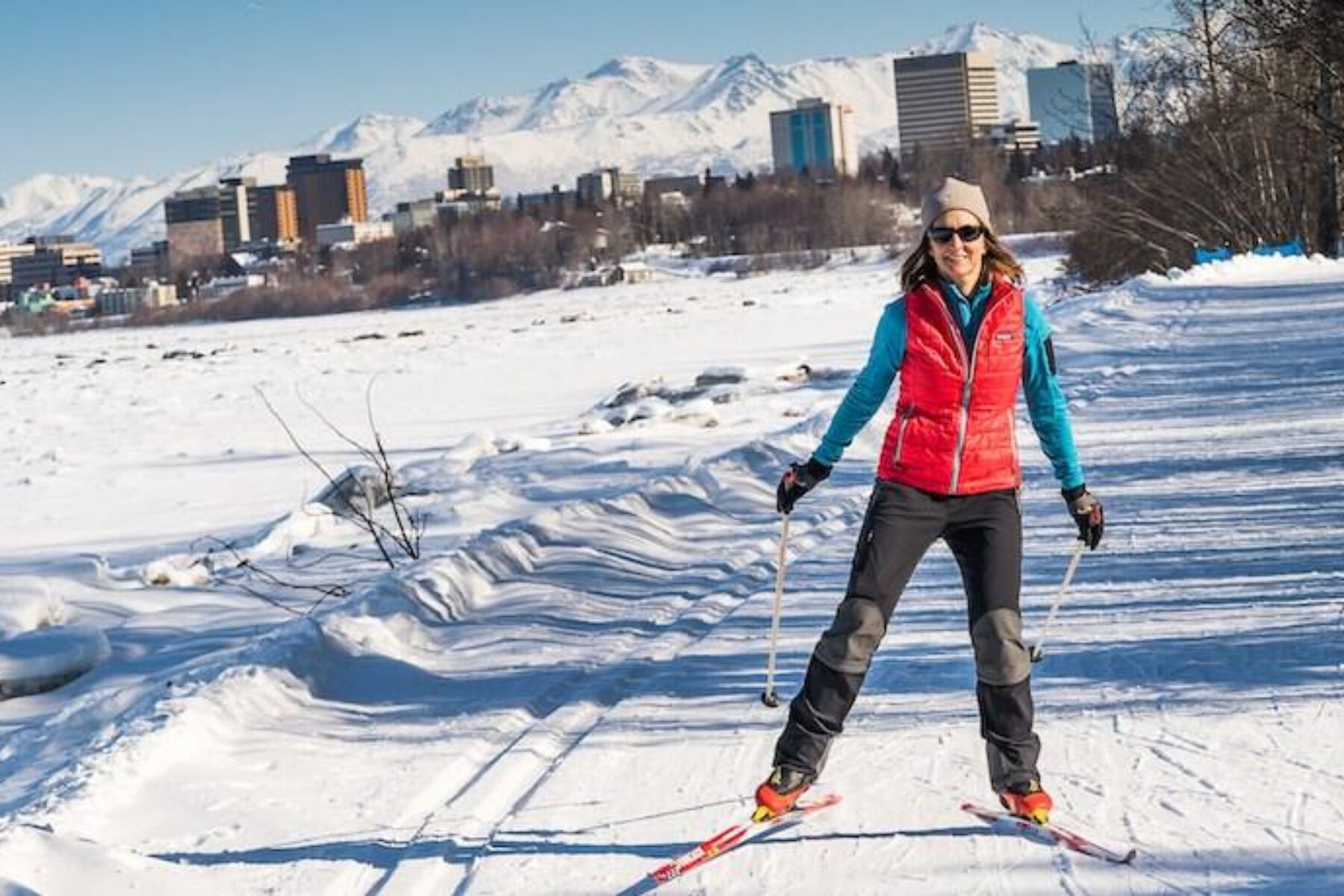
Trail of the Month: January 2019
“The trail gives you a little snippet of what Alaska is like.”
—Eric Oberg, Rails-to-Trails Conservancy
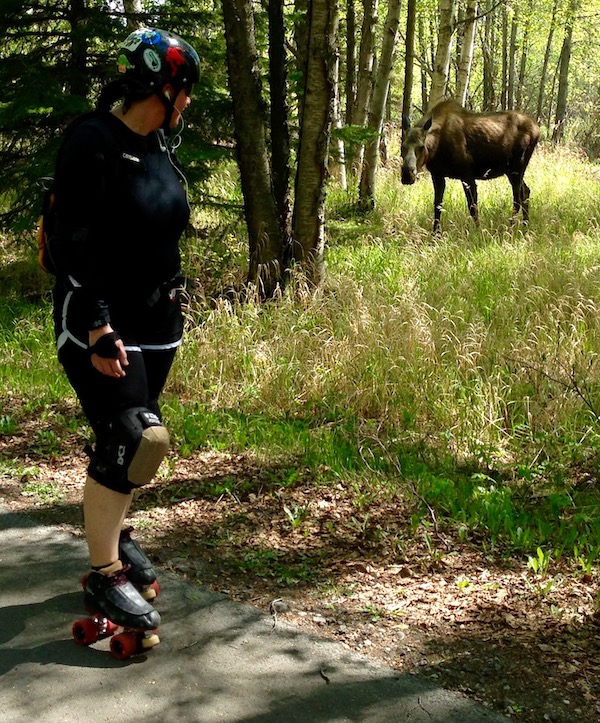
With views of the rugged Chugach Mountains and tidal inlets, Alaska’s Tony Knowles Coastal Trail offers a breathtaking experience unlike any other rail-trail in the country. Want to see a moose? They’re common along this 11-mile escape into the woodlands, and yet the paved pathway also rolls right into the downtown of Anchorage, the state’s largest city. Hugging the coastline, the trail—named for the Alaskan governor who championed it—connects several unique parks, provides a prime viewing spot for the rainbow shimmers of the Northern Lights and offers a postcard-perfect backdrop of the city’s skyline.
“Anchorage is a thriving city, but you’re never that far from a natural experience, and the trail is a great conduit for that,” said Eric Oberg, RTC’s Midwest Regional Office director of trail development, who was born and raised in Alaska. “The trail gives you a little snippet of what Alaska is like.”
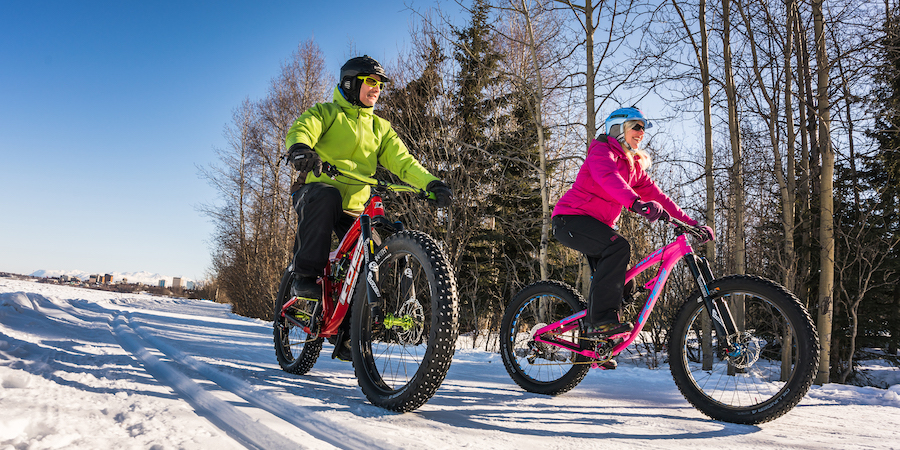
Situated in the country’s most northern state, it’s important that the trail has year-round appeal. “For a lot of people in Anchorage, winter is what it’s all about,” said Oberg, who notes that fat-tire biking was an Alaskan invention. “Winter is too long and cold and dark there not to love it. That’s why fat-tire biking and skiing are so popular, and the Coastal Trail is a mecca for that.”
Land, Air and Water Wonders
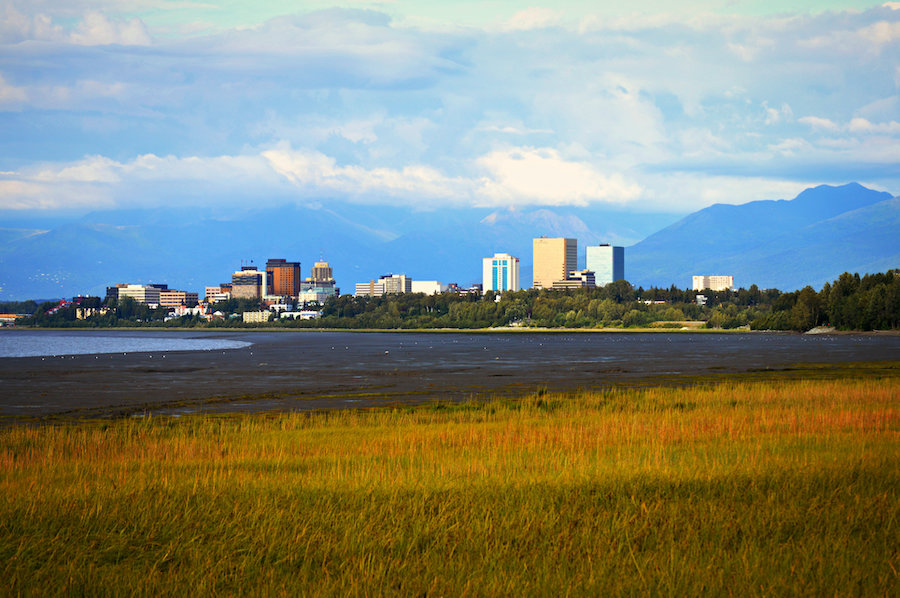
Starting from its northern end downtown, it won’t take long before travelers are wowed by their first major stop on the route. The trail skirts the lush shoreline of the Westchester Lagoon, which offers an unparalleled opportunity for birdwatching, including shorebirds, waterfowl and even eagles.
“Westchester Lagoon is a focal point of the trail,” said Maeve Nevins-Lavtar, a project manager for Anchorage’s parks and recreation department. “There’s a coffee shop and bakery, a playground, and ice skating in the winter. It’s a popular place; if you say you’re ‘going to the lagoon,’ people know what you mean.”
At the lagoon, the Coastal Trail also meets up with the Lanie Fleischer Chester Creek Trail, which heads east across town, traversing several parks along the way. At the northern end of the Coastal Trail, the Ship Creek Trail is mere blocks away, too, beginning near the Alaska Railroad depot. Visitors can hop on a tourist train to ride north to famed Denali National Park and onward to Fairbanks, or head south to Seward, a popular port for cruise ships.
“Anchorage has over 250 miles of trail, both paved and unpaved,” said Holly Spoth-Torres, Anchorage’s former parks superintendent. “Many of them are world-class greenbelt trails, including the Coastal Trail. It’s a major jewel in the Anchorage parks and trails system.”
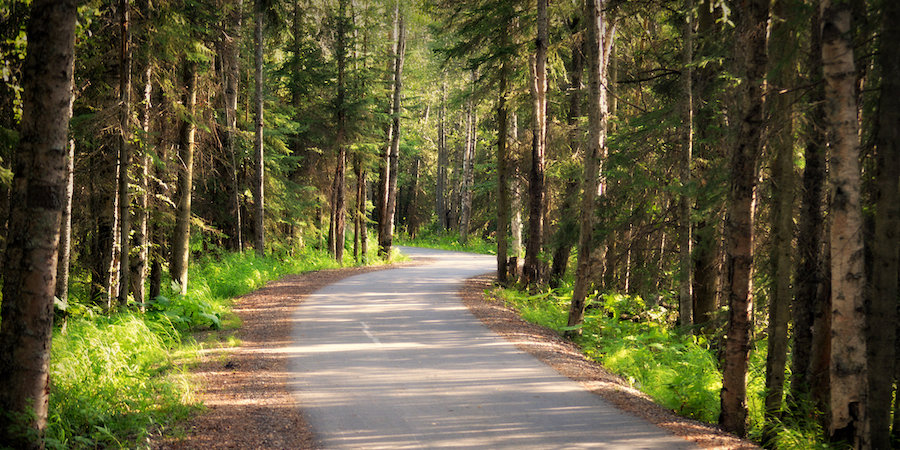
In addition to the natural beauty of the route, there’s history to be learned here, too. A few miles into the journey, the trailside Earthquake Park shares the heartbreaking story of the natural disaster that rocked the region in 1964. With a magnitude of 9.2, it was the most powerful earthquake to strike North America and the second-largest earthquake ever recorded worldwide. The park commemorates this tragedy and the lives lost with interpretative signage and artwork. Late last year, a magnitude 7.0 earthquake affected south-central Alaska, but the damage to the Coastal Trail has already been repaired, and the pathway is open.
Continuing past the city’s airport—where there’s a trailside bench from which to watch “the planes overhead and feel them rumble your air,” according to Nevins-Lavtar—travelers will reach Point Woronzof Park, another jaw-dropper with cliffside views overlooking the ocean. In the right season, sharp-eyed watchers may even see flashes of bright white among the blue waves: beluga whales.
“It’s the sunset spot in town,” affirmed Michelle Fehribach, community engagement coordinator for the city’s parks and recreation team.
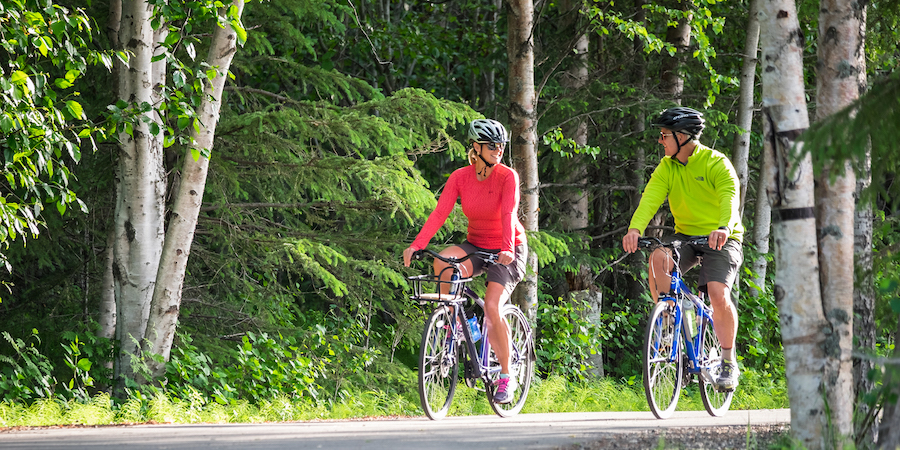
After conquering the route’s most challenging spot—a notorious hill leading up to Kincaid Park—adventurers are rewarded with a plethora of recreational amenities at trail’s end, including soccer fields, a disc golf course, a fishing lake and an archery range. Trails for mountain biking, hiking and cross-country skiing crisscross the 1,400-acre park, and its chalet houses a Nordic ski center. Moose, black bears, foxes and other wildlife might also be spotted among Kincaid’s verdant wilderness of birch and evergreens.
New Frontiers for the Coastal Trail
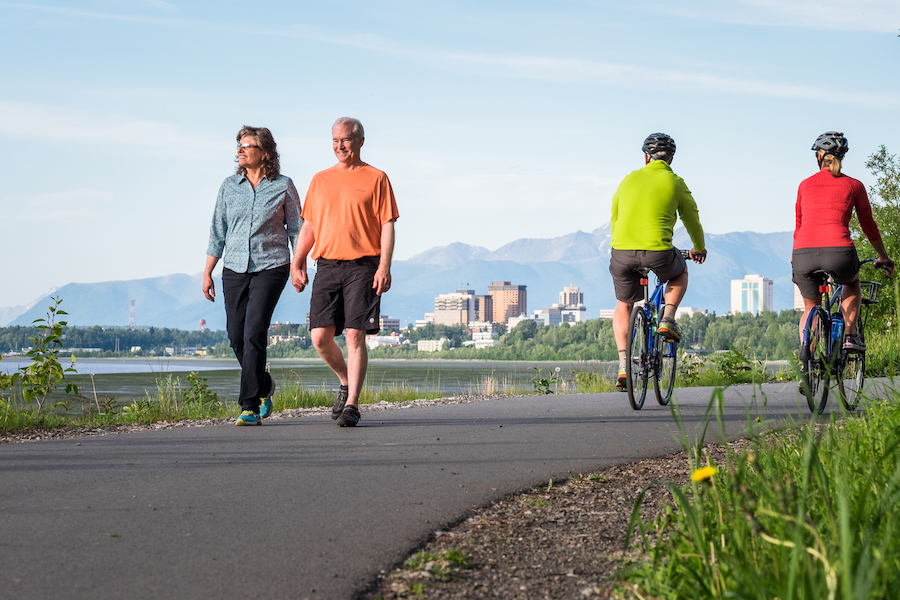
Already a bucket-list-worthy destination, the Coastal Trail is only getting better—and more accessible. A wayfinding signage initiative is underway for trails across the city to increase awareness of their locations, the places and amenities along the routes, and the connections between trails.
“When we survey people in Anchorage, one of the top things they always say they love is the city’s trails,” said Moira Gallagher, director of the Anchorage Economic Development Corporation’s Live.Work.Play program, which has a trails component. “But there is a part of Anchorage’s population that is not using trails, so we looked at the barriers to trail use and found that people have fears of getting lost.”
With this knowledge in hand, the organization embarked on improving the signage for Anchorage’s trails, including adding mile markers with location codes that emergency services can use to zero in on any trail user that calls for help. With these improved visibility and safety measures, trail use is expected to continue to rise.
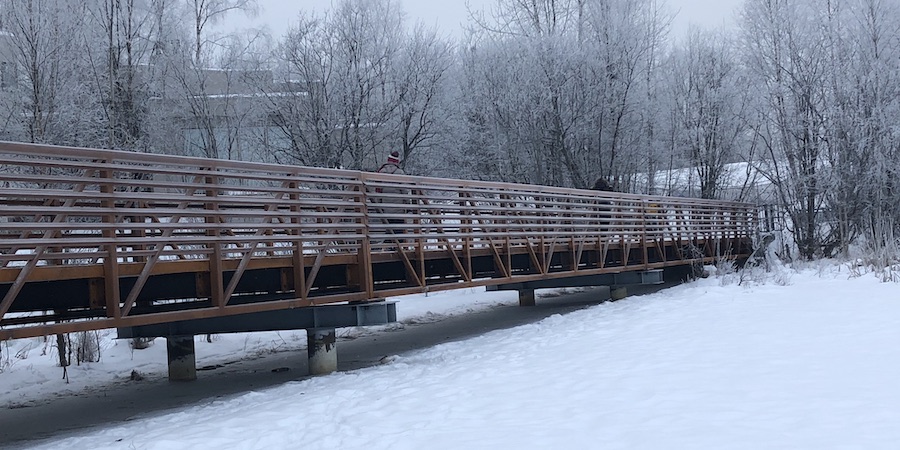
Even young children are being taught the value—and a greater awareness of—the trails in their communities. “In the Schools on Trails initiative, through the Anchorage Parks Foundation, they created customized trail maps for school districts and gave them to teachers so they can take kids outside,” said Gallagher, noting that it’s an ongoing project with new maps being created all the time. “It turns trails into outdoor classrooms.”
Over the past few years, digital trail counters have been installed throughout the city’s trail system that display usage numbers in real time. Gallagher, who has noticed an increase in bicycle traffic, even in winter as fat-tire biking has taken off, said, “Every time I go on the trail, the numbers are skyrocketing.”
Related Links
Municipality of Anchorage
Anchorage Park Foundation
Visit Anchorage
Anchorage Economic Development Corporation
Trail Facts
Name: Tony Knowles Coastal Trail
Used railroad corridor: The Coastal Trail is partially built on the former Alaska Northern Railway. On its northern end, the trail also parallels active Alaska Railroad tracks for a short distance, a configuration known as rail-with-trail.
Trail website: Municipality of Anchorage
Length: 11 miles
County: Anchorage
Start point/end point: W. Second Ave. and H Street in downtown Anchorage to Kincaid Park
Surface type: Asphalt (with soft shoulders for runners)
Grade: From downtown Anchorage, the northern half of the trail offers a relatively level grade. Toward the southern end of the trail, travelers will find three notable hills as they approach Earthquake Park, Point Woronzof and Kincaid Park.
Uses: Walking, bicycling, inline skating, cross-country skiing; wheelchair accessible
Difficulty: With its smooth, paved surface, and convenient access to downtown and the surrounding neighborhoods, the trail makes for an easy outing for most ages and abilities. The most challenging spot comes in the last half-mile of the ride, where there is a significant incline leading up to Kincaid Park.
Getting there: The trail rolls right by Ted Stevens Anchorage International Airport (5000 W. International Airport Road)—situated about 5 miles southwest of downtown—and is a local favorite spot to watch the planes come and go.
Travelers can also arrive into Anchorage via the Alaska Railroad; its passenger depot (411 West First Ave.) is located only 0.3 mile from the northern end of the trail.
Access and parking: Parking is readily available in the parks along the Coastal Trail, including (from north to south): Elderberry Park (1297 W. Fifth Ave.), Margaret Eagan Sullivan Park (1824 W. 15th Ave.), Lyn Ary Park (2009 Foraker Drive), Earthquake Park (5101 Point Woronzof Road), Point Worzonof Overlook (9700 Point Woronzof Road) and Kincaid Park (9401 Raspberry Road).
To navigate the area with an interactive GIS map, and to see more photos, user reviews and ratings, plus loads of other trip-planning information, visit TrailLink.com, RTC’s free trail-finder website.
Rentals: Pablo’s Bicycle Rentals (415 L St.; phone: 907.277.2453), open seasonally May through September, offers a variety of bikes for rent, including tandems and youth sizes; the shop is located about two blocks from the Coastal Trail. Less than a half-mile from the trail’s northern terminus lies another great option: Downtown Bicycle Rental (333 W. Fourth Ave.; phone: 907.279.3334), which offers fat-tire bikes for snow riding in addition to regular bikes.

Donate
Everyone deserves access to safe ways to walk, bike, and be active outdoors.



